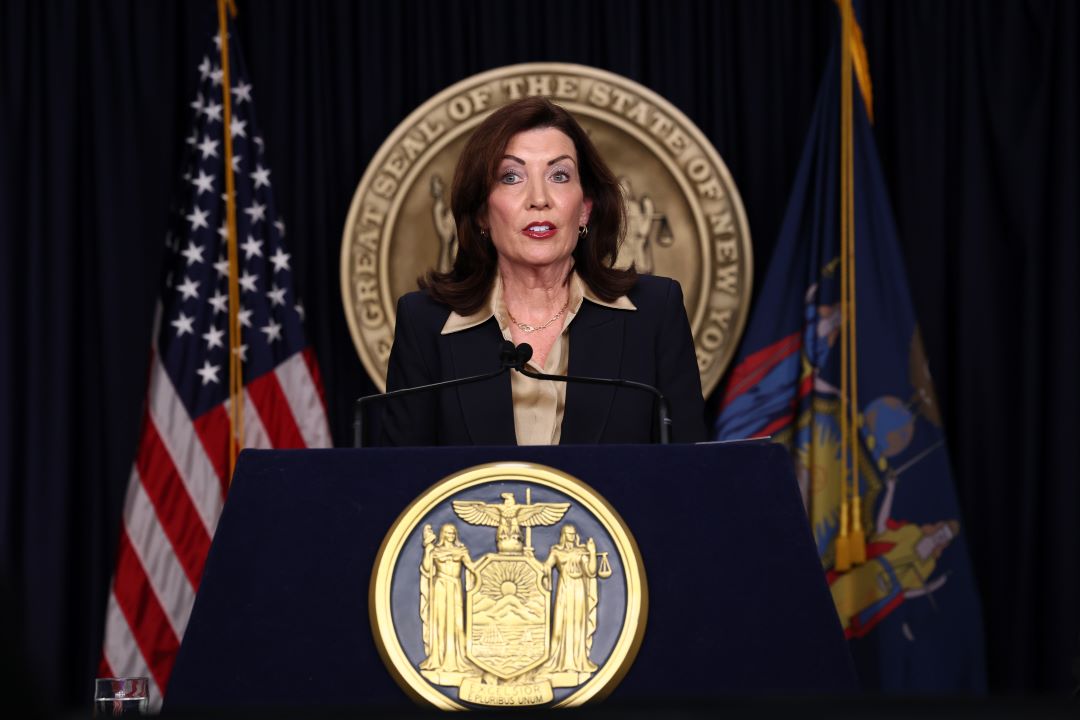Koch as Remarkable, If Temporary, New York Savior
Former New York Mayor Edward I. Koch, who died this week at 88, exemplified two extremes of budget politics in America’s largest city. When he was elected mayor in 1977, New York was teetering on the brink of bankruptcy. Standing up to municipal unions and other interest groups, he helped bring about a remarkable recovery. And once the budget was balanced and the revenue was rolling in again, he spent it.
For those too young to remember the fiscal crisis, there’s no overstating the contrast between the irrepressible Koch and his drab, one-term predecessor in the mayor’s office. Abe Beame, all 5-foot-2 of him, was a clubhouse pol and former city comptroller, who seemed overwhelmed by the rapid unraveling of New York’s finances. With the city already in virtual state receivership, Beame made the mistake of telling reporters that he was running again in 1977 to "finish the job." This inspired a memorable punch line from Koch’s most effective campaign commercial: "Finish the job? Hasn’t he done enough?"
Smart Policy, Straight to You
Don't miss the newsletters from MI and City Journal
In fact, the job had barely begun when Koch, after prevailing in a seven-way Democratic primary, took office in January 1978. Although the fiscal crisis dated back to the spring of 1975, when the city was shut out of credit markets, New York was still on very shaky ground. Governor Hugh Carey had effectively taken control of the municipal budget, but the ultimate goal was to prod City Hall back onto its own two feet.
Temporary Change
Koch more than held up his end of the bargain, balancing the budget for the first time in 15 years and getting the city released from state financial control in 1981, a year ahead of schedule. But he was more successful at temporarily suppressing the budget’s growth than he was at permanently reshaping it. Aside from one lasting productivity reform -- a move from three- man to two-man sanitation trucks -- Koch was unable to negotiate significant work-rule changes with city union leaders, who focused on an ultimately successful push to recoup the wage increases they had forgone during the crisis.
While Koch deserved a good deal of the credit for the recovery, he was immeasurably aided by larger outside factors. The double-digit inflation rates of 1979 and 1980, a negative for most of the economy, were perfectly timed to shrink the city’s liabilities while swelling its income and sales tax receipts. Federal seasonal loans were expanded into more reliable loan guarantees (on tough terms) soon after Koch took office. The state provided significant added relief by taking over most of the operating costs of both the City University of New York and the city’s court system. Koch himself gave much of the credit for the recovery to Carey, eulogizing him in 2011 as New York’s "greatest governor of the modern era going back to the administration of Alfred E. Smith."
By the time the Wall Street bull market and national economy took off in tandem in 1983, a leaner New York City government was well positioned to significantly reduce taxes, restructure government, and become more competitive with other major cities and surrounding suburbs.
Unfortunately, that didn’t happen. Adjusted for inflation, city-funded operating expenditures shot up by 35 percent during Koch’s last two terms. Koch allowed the city payroll to grow by 57,000 full-time positions, pushing the number of employees well past the level that had helped trigger the fiscal crisis. By the time David Dinkins succeeded him in 1989, the city budget was again dangerously bloated and ready to tip out of balance. Dinkins presided over another fiscal crisis, and it was left to Rudolph Giuliani to clean up the mess.
In his defense, even if Koch had been more determined to fundamentally restructure and permanently streamline New York’s budget, he would have been fighting a strong political tide. Then as now, the unions could count on support from their friends in both houses of the state legislature, which shaped the laws controlling crucial budget drivers such as city taxes and employee pension benefits.
Bitter Rivals
Koch severely undermined his own clout in Albany with a disastrous decision to run for governor in 1982. The upset victor in the Democratic primary was Mario Cuomo, the man he had defeated in the 1977 mayoral primary runoff. That left the state’s top office in the hands of a bitter political rival, while state lawmakers were all too willing to do the unions’ bidding. Koch countered by strengthening his alliances with Democratic bosses in the Bronx, Brooklyn and Queens -- all of whom would be implicated in the Parking Violations Bureau scandal, which badly tarnished his third mayoral term and contributed to his loss when seeking a fourth in 1989.
Memories of his mistreatment at the hands of Albany hacks no doubt fueled Koch’s last big campaign, leading a coalition urging 2010 candidates for state office to support redistricting reform that would prevent legislative leadership from drawing maps favorable to incumbents. Governor Andrew Cuomo duly signed on -- only to eventually approve gerrymandered Assembly and Senate district maps as the price for achieving some of his legislative priorities, including pension reforms that will at least modestly help the city.
Koch was disappointed, but surely wasn’t surprised. Signed pledges aside, the legislative votes were never really there for an independent redistricting commission. Best known for his joyful self-centeredness, Koch also had two characteristics especially valuable in a government executive during a fiscal crisis: He was a realist, and he could count.
This piece originally appeared in Bloomberg
This piece originally appeared in Bloomberg

